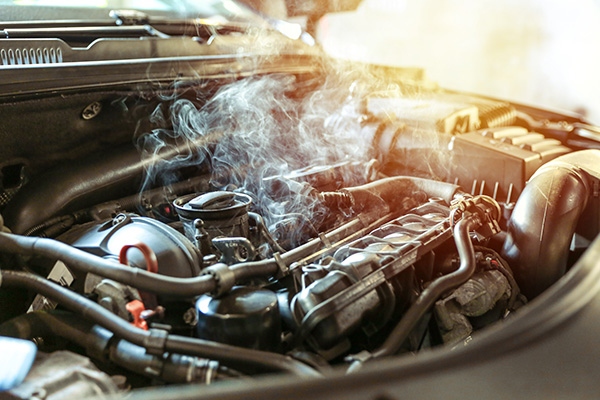
Your car’s cooling system plays a critical role in keeping your engine at the right temperature, preventing damage from overheating. But like any system, it needs proper care to function effectively. Ignoring signs of trouble—such as low coolant levels, leaks, or a failing thermostat—can lead to costly repairs and even total engine failure. So, what can you do to keep your cooling system in top shape and avoid a breakdown?
Cooling System Maintenance
Engines generate an enormous amount of heat, and without an efficient cooling system, that heat can build up and cause significant damage. The cooling system keeps temperatures stable by circulating coolant through the engine and radiator, preventing overheating in the summer and freezing in the winter. Regular maintenance ensures that:
- Your engine stays within the proper temperature range
- Coolant remains clean and at the correct levels
- Components like the radiator, hoses, and water pump function properly
- You avoid major engine damage due to overheating
Neglecting your cooling system can lead to costly repairs, including blown head gaskets, warped engine components, and radiator failure.
Check Your Coolant Levels Regularly
Coolant, also known as antifreeze, is essential for keeping your engine at a safe temperature. Over time, coolant can evaporate, leak, or become contaminated, reducing its effectiveness. Checking your coolant level every few weeks can help you catch small problems before they become serious.
- Make sure the engine is completely cool before opening the radiator cap.
- Locate the coolant reservoir (usually a clear plastic tank) and check if the level is between the “MIN” and “MAX” marks.
- If the coolant level is low, top it off with the correct type recommended for your vehicle.
- If you find yourself refilling coolant frequently, there may be a leak in the system that needs attention.
Flush and Replace Coolant on Schedule
Coolant doesn’t last forever—it breaks down over time, losing its ability to regulate temperature and protect against corrosion. Most manufacturers recommend flushing and replacing coolant every 30,000 to 50,000 miles, but it’s always best to check your owner’s manual for specific guidelines.
Signs that your coolant needs replacing include:
- Discolored or rusty coolant (it should be bright green, orange, or pink, depending on the type)
- A sweet or burnt smell from the engine bay
- Overheating issues despite proper coolant levels
- Flushing the system removes old, contaminated coolant and any debris that could clog the radiator or other cooling components.
Inspect Hoses and Belts for Wear
The hoses and belts in your cooling system are essential for circulating coolant and ensuring everything operates smoothly. Over time, these components may dry out, crack, or develop leaks, which can result in coolant loss or decreased circulation.
- Check radiator and heater hoses for cracks, bulges, or soft spots.
- Inspect the serpentine belt that drives the water pump—if it looks worn or frayed, replace it before it breaks.
- If you notice coolant leaks under your car, have a professional inspect the system to locate the source.
- Replacing worn hoses and belts before they fail can prevent a breakdown and expensive repairs.
Keep the Radiator Clean and Free of Debris
Your radiator dissipates heat from the coolant, allowing it to return to the engine at a lower temperature. If the radiator becomes clogged with dirt, bugs, or road debris, it can’t cool the coolant effectively, leading to overheating.
To keep your radiator working efficiently:
- Check for visible debris on the front of the radiator and remove it carefully.
- Use a hose or compressed air to clean the radiator fins (be gentle to avoid bending them).
- Make sure nothing is blocking airflow, such as a misplaced front license plate or heavy dirt buildup.
- If your radiator is clogged internally due to old coolant or corrosion, a professional flush may be necessary.
Watch for Warning Signs of Cooling System Issues
Even with regular maintenance, cooling system problems can still occur. Catching them early can save you from costly engine damage. Be on the lookout for:
- Rising temperature gauge – If your engine temperature climbs higher than normal, there may be an issue with coolant flow or radiator efficiency.
- Puddles of coolant under your car – Leaks can develop from hoses, the radiator, or the water pump.
- Steam coming from under the hood – This indicates severe overheating and should be addressed immediately.
- Unusual engine smells – A sweet smell often means a coolant leak, while a burnt odor could signal overheating.
If you notice any of these signs, have your cooling system inspected as soon as possible to prevent further damage.
Is your cooling system due for a checkup? Keep your engine running at the right temperature with expert maintenance at Precision Import Repair in Hillsboro, OR. Schedule your service today!